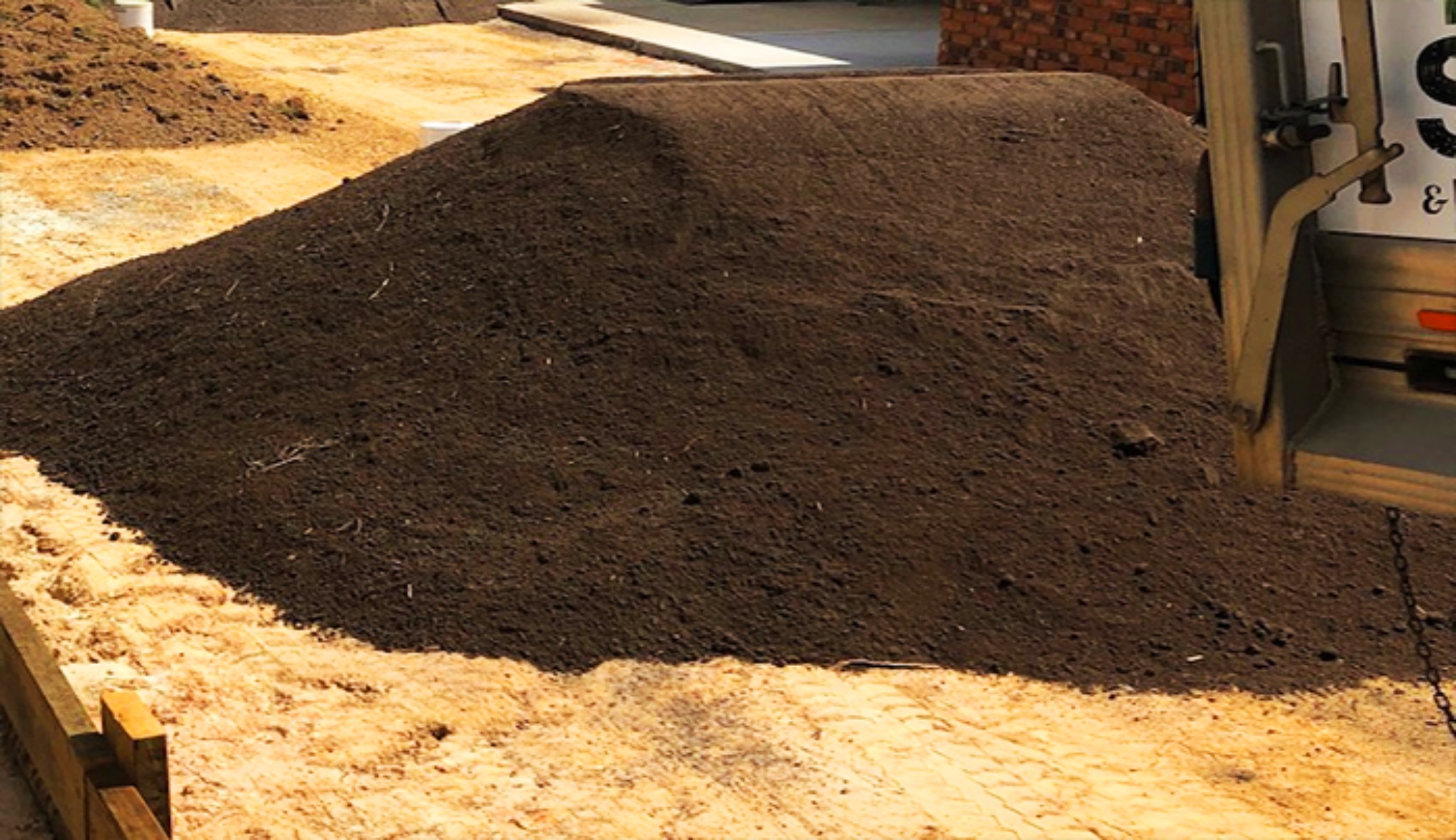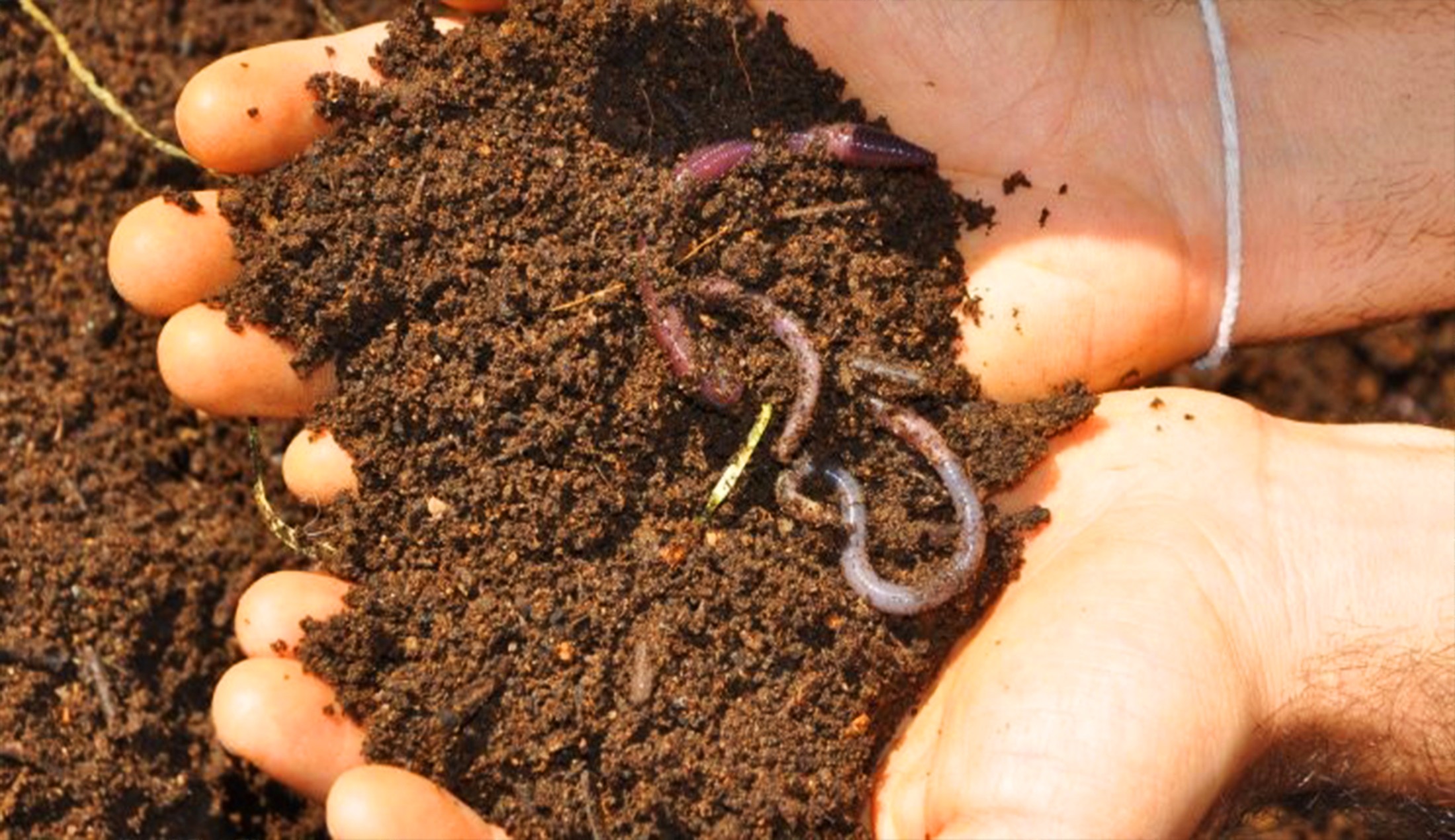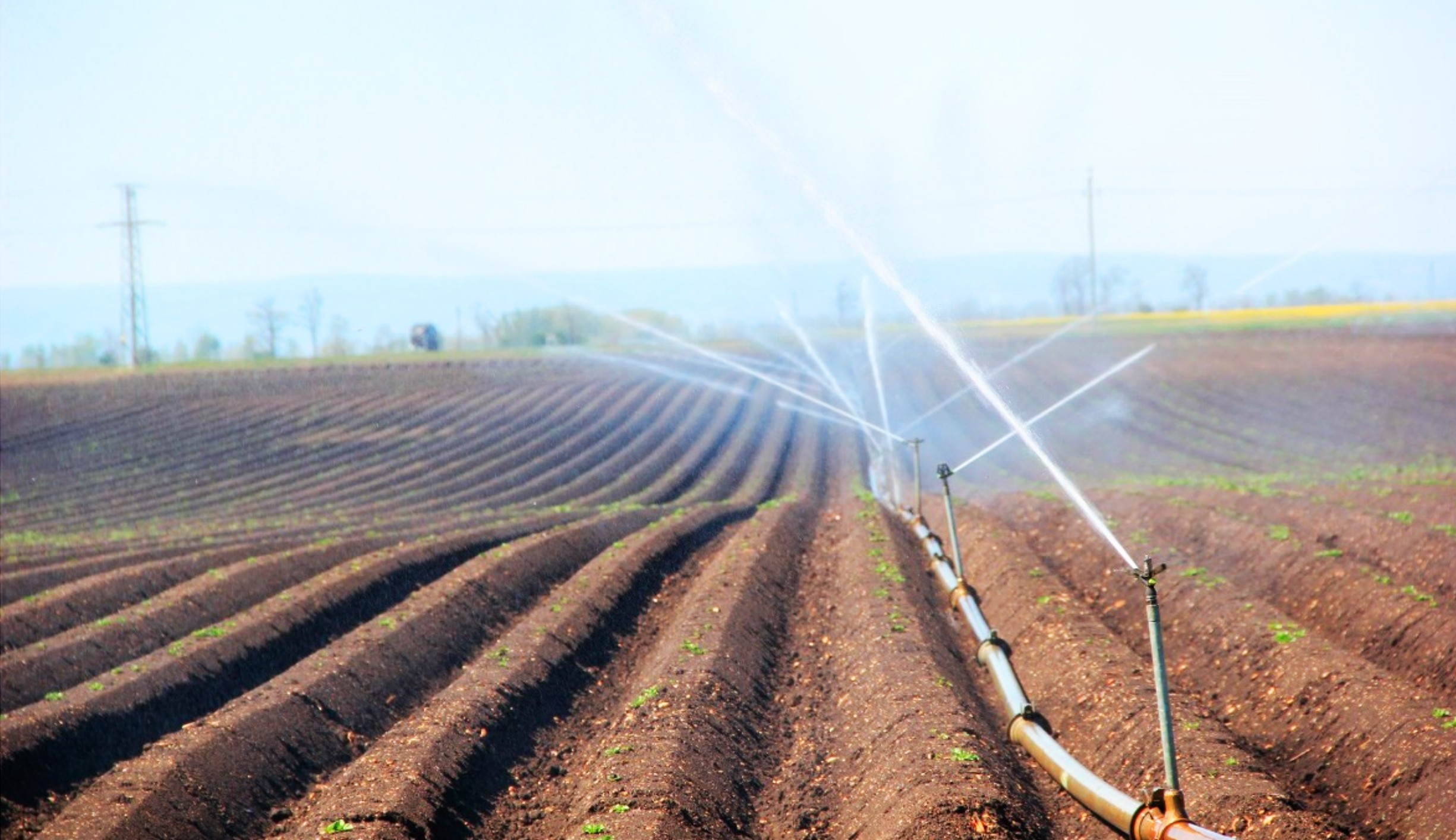The international day of soil came and went hardly anyone took notice. Soil, is one of the most important components of any land, yet its value has been overlooked by most modern approaches to land development, agriculture and forestry. To most of us, soil is the stuff that holds trees up. We see it as a solid surface for us to walk, ride or construct upon. Our perception of its usefulness in our daily lives does not exceed much beyond providing a medium to grow our crops. In fact modern agriculture has discounted the value of soil in providing nutrients for plants by promoting the role of artificial fertilizer to the detriment of good soil management. In Sri Lanka most texts on soil only address the physical or chemical nature of soil, a view that has allowed our farmers to be pushed into reliance on 'high input chemical agriculture', by the Government. Tragically, a meeting addressing sustainable agriculture earlier this year, demonstrated the fact that our agricultural soil scientists have concentrated their efforts on the inorganic fraction only.
The promotion of high input chemical agriculture is still being conducted, even though it has been demonstrated to be harmful to human health, local biodiversity, and sustainability of production, environmental functions, social functions and local economies. The question that then arises is, 'what are the options?' There are many options that have been proposed and demonstrated, ranging from the adoption of traditional agricultural practices to developing new farming systems such as biodynamic and organic agriculture. Unlike chemical agriculture, all these approaches pay great attention to the management of soil as a primary resource. Thus a closer look at soil is warranted.
The soil is comprised of two distinct fractions called the 'organic (biological) fraction' and 'inorganic (chemical/physical) fraction'. There is a slow flow between them in the form of mineralisation and decomposition. These fractions act as reservoirs to various organic compounds that identify in their history. The organic fraction is largely the breakdown products of photosynthetic compounds and their derivatives. The inorganic fraction is largely the breakdown products of rocks. Most soils are comprised of a mix of these two fractions in various proportions. These fractions are called mineral matter and organic matter respectively. The amount of organic matter in most soils is typically low ranging from under 1% to 10%.
It is this organic fraction that drives both the soil ecosystem and the ecosystem above it. Sustainable agriculture and forestry in any area, will be an impossibility without the levels of organic matter optimum for that soil. The organic matter of soil when extracted is seen as a dark, amorphous solid mass. On closer examination this 'solid mass' is comprised of billions of organisms. It is also the biological filter that detoxifies a large proportion of the poisons that we apply to the environment we live in. It is a world as complex as, and most certainly older than, the world that lives on its surface. It lies continuous over most of the land surface of the planet it is in a very real sense the 'living skin' of our planet.
The world of soil is bizarre to us who live on the surface. It is opaque to light and mostly solid. Communication is by chemicals, e.g.. pheromones or physical, e.g. vibrations. Movement is slow; the faster organisms like worms are the giants of this world, tunneling through at a fairly rapid rate measured in centimeters per minute. More common are the fungi that move by growing through the soil at rates measured in centimeters per month, or the bacteria, which have rates, measured in centimeters per year.
It is a busy world, one gram of ordinary farmyard soil can contain over 1 billion individual bacteria, over 100 million individual actinomycetes and over 1 kilometer of fungal hyphae, notwithstanding plants like algae and animals like collembolans, nematodes or worms. This massive diversity provides for the multitude of critical functions, that a living soil provides.

Understanding soil ecosystems and how they work is important for both production and conservation goals. In production systems this information will enable the optimization of inputs and help develop more sustainable agriculture. For instance, while phosphorus is needed as an amendment on most soils to produce good crops, the source of phosphorus used can make a great difference to both productivity and profitability. Phosphorus that has been acted upon by certain soil bacteria can produce a higher volume of crop than that produced by the same amount of phosphorus added as superphosphate. Developed commercially, it has the potential to reduce fertilizer bills significantly. In a submission to US Agriculture In 1938 Dr, William Albrecht a leading US soil scientist, made the following observation.
“Soil organic matter is one of our most important national resources; its unwise exploitation has been devastating; and it must be given its proper rank in any conservation policy as one of the major factors affecting the levels of crop production in the future... The Nation should be made aware of the rapid rate at which the organic matter in the soil is being exhausted. Farm- management practices should be adopted that will at least maintain, and in as many cases as possible even increase, the supply of this natural resource in the soil. The maintenance of soil organic matter might well be considered a national responsibility.”
But In 2017 in Sri Lanka, we still have to appreciate this fact. The colonial experience robbed us of that precious organic matter, the felling of forests and clearing of land began with the colonial adventure, in 1820 all land without title ie. The forests and Forest Gardens were deemed 'crown land' and sold to international commercial interests. Emerson Tennent writes that ‘the 'coffee boom' of 1835 saw a rush for investment in land that was only equaled by the rush for land during the gold discoveries in the U.S.’ Thus, the organic soils of the mountains of this country, built over a period of twenty million years, was destroyed in a matter of decades.
The impact of this loss is conveyed by Fredrick Lewis in his book ‘Sixty-Four Years in Ceylon’, he makes this observation on the process of destruction of the mountain forests in the Agra Patna area.
“I know of no more awe-inspiring sight, than that of a thousand acres on fire. Sheets of flame appear to leap into the air, and yell with a sort of devilish delight at their victory over the magnificent trees they are reducing into charred masses of cinder and charcoal. It is more than impressive, it is fearful, yet grand! After the fire has completed its work, the land is covered with. black logs, lumps of charred timber, masses, and often great fragments of stones, broken by the heat hat has swept over them. A deep black covers the landscape; impressive, but depressing.
It was in a burned wilderness like this, that I found my new home. It lay at the extreme end of one of the many blocks of land that had been simultaneously burned off. My path, for road it could not be then called led over hundreds of fallen and charred logs, and followed the valley of the Agra stream.
When morning broke upon the day following the events recorded at the conclusion of the last chapter, I found myself gazing upon a scene not altogether unfamiliar to me. All around me lay hundreds of charred black logs, stumps in fantastic shapes and outlines: fallen branches, broken and distorted by fire: cinder heaps, and little rivulets of sodden ash: all indicative of the fierce, merciless fire that but a few weeks ago, had raged over a spot that so lately had been a beautiful forest land.
It was now a blackened wilderness, to be changed into fields of coffee, by the labour and patience of man. A strange picture; fascinating in one respect: fearful in another and yet so full of a strange mixture of possibilities was this wild heap of ruins, this uncouth mass of slaughtered giants of an inarticulate, yet eloquent world, to be transformed by, industry in the pursuit of fleeting wealth.”
The process, eroded and destroyed most of the topsoil leaving plantations that cling to the subsoil and yield only with artificial fertilizer that we have to import. As the organic matter receded so did soil cohesion, such that at a slightest downpour, bit of the fields come loose and just fall away.
It is not only agriculture and forestry that benefit from the soil. The economic and industrial potential of soil biota is also largely forgotten. Soil microbes have demonstrated an enormous versatility in industry. Today, many countries use microorganisms for mining and the recovery of metals from poor ores or mine tailings. Australia and America use this technique to produce copper and nickel, Canada produces uranium and Russia produces gold and manganese. Soil microbes also show promise in the production of medicines and drugs e.g.. Penicillin, Streptomycin, Aureomycin. Complex industrial chemicals, food and perfumes are all produced using such organisms. All this has been achieved using just a minute fraction of the incredible diversity of organisms that make up the world of soil. The promise of what may be gained by a systematic understanding of the soil is colossal.
This promise is made more valuable with the knowledge that the soil of this country was truly unique. It has remained un-submerged by the ocean for over twenty million years and in that time built a soil biodiversity without parallel anywhere. The largest soil dwelling snakes, limbless and bi-pedal soil dwelling lizards, legless soil dwelling amphibians suggest an ocean of soil that once covered this land. What amazing organisms we lost will never be known.
Thus, history demonstrates that the great soil capital of this nation was lost with the advent of colonial plantation agriculture. It was hoped that this loss could be dealt with. However, the current ill-advised and thoughtless programs in agriculture and forestry will destroy the remaining bits of living soil with artificial fertilizers and monoculture ‘forest’ plantations.
The effect of clearing the forests and allowing erosion of the soil, especially on the mountain areas became obvious to scientists who visited this country. Dr. Strange, an agricultural expert to Ceylon made this observation in 1909 with respect to the clearing of the mountain forests;

“It would not have been necessary to notice here the matter of soil denudation, did it not affect irrigation and water supply. The result of stripping the soil is to make the springs on tea states dry up quickly; to diminish the fair-weather flow of streams and to increase their storm flow (whereby temporary irrigation weirs are carried away) and to choke with silt the beds of the streams and the irrigation channels led from them. It is also said to reduce the fertilizing property of the water, as there is now less leaf mould in solution. Even paddy fields have been ruined by sandy deposits laid on them. When tanks lie in the course of streams thus affected, the rate of their silting-up will rapidly increase and their storage capacity will greatly diminish. Even the large rivers, such as the Kelani, have had their section diminished by soil debris, so that for this reason, as well as on account of the greater run-off produced by the clearance of the forest entailed by the establishment of estate plantations, the flood waters cannot be contained in the river channel, but are spread over the riparian land and do much damage. If such damage affected only a small area it would not, of course, matter much, but it has to be remembered that the tea and rubber estates are on the hills, and uplands, which are the principal sources of supply to rivers draining two-thirds of the Island; the effect of denudation it thus widespread.
The importance of retaining and building the soil in the watershed areas feeding the hydroelectric system has been pointed out over and over since these comments. Yet, reservoirs are constructed without any consideration of the silt loads of the eroding watershed or any plan to revegetate them.
Development and 'modern' agriculture has begun to impact our soils far more today than times past. Soil compaction brought about by the use of heavy machinery and vegetation removal is common throughout the land. Compacted soils cannot absorb rainwater as before and run off with accompanying floods are the result. Acidification of the soil is a phenomenon that accompanies application of chemical fertilizers and salinization is a clear danger when surface irrigation, as with industrial agriculture, begins. Urbanization and road construction now seals a sizable area of soil under impervious surfaces.
Vegetation is critical because, good soils generated are by plants roots and microorganisms, which in turn create a ecosystem that can clean, process and hold, considerable amounts of water. They create pores which take in water, and will keep doing so until they are full, after which they transmit water through, these pores. Some of this water will steadily drain through the soil into waterways and streams and maintain dry weather flow at times of no rain. But in a healthy soil, much of it will be retained, away from the influence of gravity, for use of plants and other organisms to contribute to land productivity and soil health.
When soil loses its tree cover and the input of organic matter to feed the living soil goes down, it loses its cohesive strength. The loss of cohesive strength accelerates erosive processes and is brought about through the loss of soil binding agents both macroscopically and microscopically created. The macroscopic binding agents are the roots of plants and plant compounds. The microscopic agents are the bacterial gums, polysaccharides and humates. With an increase of chemical reliant intensive farming there is a corresponding loss of soil microorganisms that provide cohesive strength to soils. The result is, erosion in wet weather and an increase of dust during dry weather.
Soils also store vast amounts of carbon, more than twice as much as in vegetation or the atmosphere. They do this by respiration processes, which use the energy fixed by photosynthetic activity, to create very long-lived soil carbon compounds synthesis such as humates. The more undisturbed the soil the more carbon it can accumulate and hold. Here, the effective rate of sequestering is dependent on the nature of the soil that it is being produced in.
Thus forested areas or areas with dynamic vegetation create the best soils in nature. Agriculture, that is sensitive to the needs of soil, such as biodynamic, organic and many traditional methods create very good soils in human environments. It was an inter-digitization of these two elements that sustained long-lived agricultural societies the world over.
However the current trend in ‘land development’ is to reduce tree and forest cover and degrade the soil ecosystem. The current trend in agricultural development is to add chemicals that destroy the soil’s natural productivity and create energy addicted production systems.
This trend if allowed to continue will impact not only the present population but will also compromise the health and security of future generations.
Not only do we need to become acutely aware of the value of clean water, we need to work nationally at maintaining soils and soil quality. Our ancestors, conserved the mountain forests and soils and gained dry weather water flow for the lowlands, the productivity of that agriculture is history.
The wisdom of our ancestors. Should be recognized and utilized in developing responses to the dangerous future before us with the extreme climate changes expected. Climate patterns have been known to be regular will change dramatically. Rare climate events that brought droughts and famines over the centuries are expected to increase in frequency, because we have accelerated this process. We need to develop coping mechanisms rapidly.
We need to develop high biomass, diverse, low external input dependent, production systems as a critical development goal. We need to place a value on the environmental services that they provide. Environmental services are being recognized. by many nations today. Some nations are already including them in their national budgeting.
Some examples are:
- Carbon sequestration
- Water protection
- Water cleansing
- Rainfall incrimentation
- Biodiversity protection
- Food security
- Erosion control
The basis of most these services is the soil. For without a good living soil, the ecosystem above cannot develop. Tragically, it is true that the current push in agriculture to be reliant on chemicals and fossil energy or production will not only destroy the little life we have in our soils, it will also tie the price of food to the price of fossil energy. No one who claims concern for this land, should be ignorant of what the land represents.
With a better knowledge of the land, with a deeper commitment to the future, we might be able to engage in a national conversation on the state of our land and its soil and its health.
 Posted on 16 June 2022 - Author (Dr. Ranil Senanayake)
Posted on 16 June 2022 - Author (Dr. Ranil Senanayake) 


